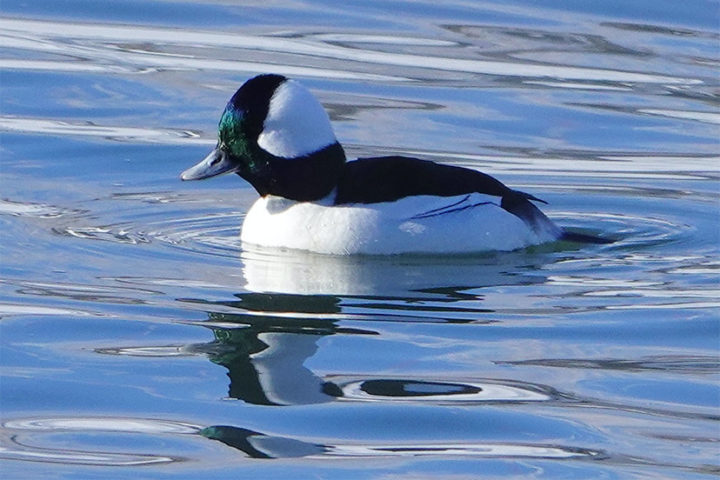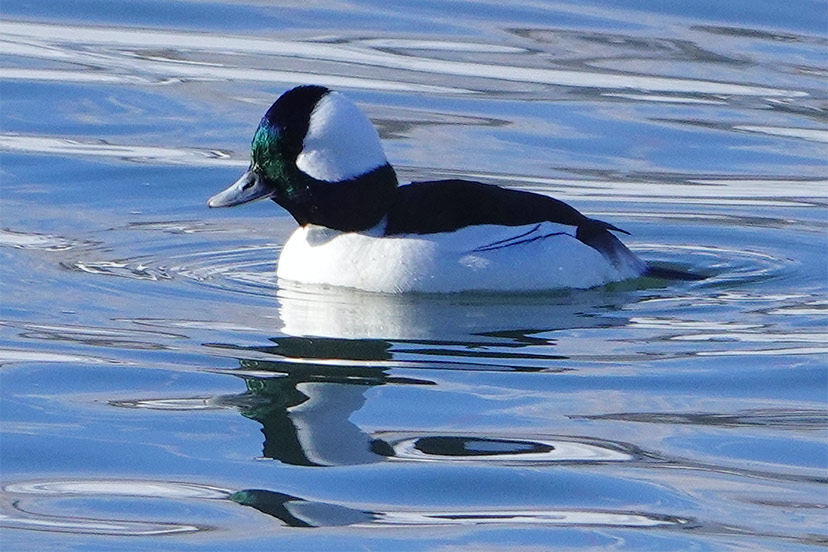Whether on foot or snowshoe… whether at a backyard feeder or from a car… over 82 participants contributed to counting birds in the Pagosa Springs Christmas Bird Count (CBC), the 122nd CBC on record for the National Audubon Society.
For those who partake in this winter census in the cold, many can attest to the fun of the challenge: scouring our 8 respective zones is like a treasure hunt, complete with short daylight hours, numb fingers, and a willingness to look for even those more-hermetic of species. Where would one look (or listen) for a Lewis’s Woodpecker or a Belted Kingfisher? It requires strategy and, yes, sometimes happenstance. The point is that folks are out on the landscape detecting and observing avian life within a consistent range of time each year. That way, over time, we can see trends develop.

4,973 total birds of 65 species were tallied across our 15-mile diameter count circle on December 18. When compared to last year’s effort, we viewed over 200 more overall birds in the circle, but one less species was detected. Interestingly, our findings over the last several years have been very consistent on number of species present at this time of year. What seems to fluctuate more profoundly are the overall numbers of birds. This factor, from what we can tell, has a lot to do with weather leading up to the count. Are the lakes fully frozen over or is there more open water for large groups of waterfowl to continue to linger and feed? Have heavy snows rendered fall seed crops closer to the ground inaccessible?
Our three top ranking species based on total numbers were (1) American Crows at 655 individuals, (2) Ring-necked ducks at 477 individuals, and (3) American coots at 383 individuals.
Two new species were detected this year never observed in our CBC records. Though a semi-regularly seen inhabitant of our mixed conifer forest during summer, this CBC was the first to detect a Williamson’s sapsucker. Two groups saw this species in different locations across the circle. If you look at a range map for this species, it’s expected to be in southern New Mexico or Arizona by this time of the year. Interesting. Could this have to do with what felt like a long fall and a late-to-initiate winter?
Perhaps, even a thinner snowpack and more access to prey would explain the presence of the second new species detected, a Swainson’s hawk, identified near Hatcher Reservoir. Nearly all individuals of this species are expected to have migrated to points as far south as Argentina by now.

Much like last year, our efforts were altered for the sake of safety during the ongoing presence of covid. We will meet on Zoom on January 19th to share our findings, foregoing the storytelling and cheer of our traditional chili dinner wrap-up party typically held in person on the evening of the count. To find out more details, visit the Weminuche Audubon Society website. Look for our CBC report there as well.
A big ‘thank you’ is in order for all that contributed to the effort, including multi-year youth participants, Sage Merrill-Exton, Peyton Jackson, and Jackson Couch. In addition, thanks to the dutiful leadership of scout leader, Jonathan Dobson, we had a group of Cub Scouts that hiked along and birded a stretch of the San Juan River on private property. Great to see all ages involved in caring for birds.
The Christmas Bird Count is only one of the fun bird surveys that chapter members participate in. Next up is the worldwide Great Backyard Bird Count in February. This spring, we’ll initiate our second year of American dipper nest-surveying along the many tributaries of the San Juan. The Weminuche chapter has its own Bird Monitoring Project survey in the National Forest conducted from late May through early July, in partnership with the San Juan Headwaters Forest Health Partnership.
We welcome participation in any of our events from all interested parties. Information may be found on our website or by emailing us at weminuche.audubon@gmail.com.

